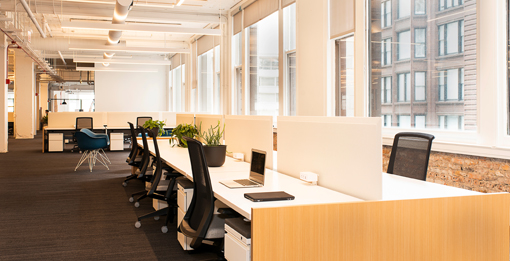 Visual comfort, for a very long time now, has been one of the most overlooked aspect, when it comes to an occupant's comfort inside a building. Although the issue of visual comfort is well highlighted in the National Building Code (NBC) of India from the very beginning, the subject of glare was not introduced until the most recent published version - NBC 2016. Even though lighting technologies have made significant progress in the last decade, most of these advancements are with respect to energy efficiency, and hence, energy conservation. With the quantum of indoor time being at an all-time high due to the current pandemic, it becomes all the more important to study the factors affecting visual comfort.
Visual comfort, for a very long time now, has been one of the most overlooked aspect, when it comes to an occupant's comfort inside a building. Although the issue of visual comfort is well highlighted in the National Building Code (NBC) of India from the very beginning, the subject of glare was not introduced until the most recent published version - NBC 2016. Even though lighting technologies have made significant progress in the last decade, most of these advancements are with respect to energy efficiency, and hence, energy conservation. With the quantum of indoor time being at an all-time high due to the current pandemic, it becomes all the more important to study the factors affecting visual comfort.
Right light at the right time can influence everything from our sleep to how we feel and perform. Light deficiencies or surplus affect the functioning of the circadian system and quality of sleep. Disruption of circadian rhythm has been linked with metabolic disorders, obesity, diabetes and depression. It is therefore important to determine the visual comfort requirements for a building, right from the initial design stage. This typically means the correct visual parameter settings for room designed to perform a particular task. The Useful Daylight Illuminance (UDI) is a holistic analysis method measuring the useful daylight as well as glare on the work plane. The ECBC defines UDI (Useful Daylight Illuminance) between 100 to 2000 Lux as useful daylight. The National Building Code 2016 also gives the minimum illuminance level (lux) applicable for different activities and spaces. However, these are focussed more towards the quantity instead of quality.
In view of the above, MT CoE is developing resources such as guidelines for glare indices in buildings, policy brief on visual comfort for residential building, and conducting occupant visual comfort survey for residential buildings, findings from which will help formulate design guidelines for developers, architects and practitioners. The outcomes of the research would certainly help in generating awareness on various factors involved in visual comfort. The analysis will also bring out the importance of daylighting for people's overall satisfaction, and this evidence may assist policy-makers in establishing appropriate guidelines and standards. The findings would also help planners and architects implement improved daylighting in their housing projects, and provide residents with better luminous environments.
Glare is a condition of vision in which there is a feeling of discomfort and/or a reduction in visual performance. It is generally caused by extremely bright light sources or by strong brightness contrasts in the visual field. Glare sources include windows, glossy magazine pages, computer screens, or incorrectly designed and installed artificial lighting. It is a chief cause of visual discomfort – and even visual disability. Two well-known types of glare have been distinguished in the literature:
Mahindra-TERI CoE has prepared this abridged version of the “Glare Management Guidelines for Artificial Lighting” have been developed through a consultative process involving academia, lighting experts and building professionals. These encompass definitions for various types of glare indices, including their impact on human health. The methodology for calculating the glare indices is also included as a part of the guidelines which will help design professionals to quantify glare in numeric terms. These guidelines will keep evolving in keeping with the advancements in technologies and practices in the urban built environment.
Good lighting in a building provides sufficient light in the right place. This enables occupant’s visibility and comfort, allowing them to perform their work efficiently without much strain or fatigue. The perception of space is directly connected to the way light integrates with it. How we respond to a certain light scene, what we experience and how we interpret different elements are greatly affected by how light interacts with us and with the environment. A questionnaire survey is developed to investigate the effects of lighting and human behaviour patterns on subjective visual comfort. The objective of the survey is to develop a relationship between the results of the literature survey and the practical experience of occupants. The survey is designed to analyse the following aspects regarding the effects of visual comfort:
